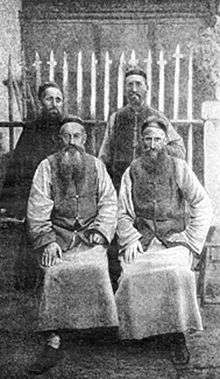Félix Biet

Félix Biet (1838 in Langres, Haute-Marne – 1901 in Saint-Cyr-au-Mont-d'Or) was a French missionary from Paris Foreign Missions Society and naturalist.
Life
Biet was born in 1838. He was ordained as a priest in 1864. He was next sent to Tatsienlu in Tibet (called Dartsedo by Tibetans) as a missionary and he became the Bishop of the Apostolic Vicariate of Thibet, now Diocese of Kangding, in 1898. Félix Biet collected butterflies for Charles Oberthür who dedicated three new species (Thecla bieti, Pantoporia bieti and Anthocharis bieti) to him. Alphonse Milne-Edwards described the Chinese mountain cat (Felis bieti) and the black snub-nosed monkey, (Rhinopithecus bieti), the latter collected and sent by Jean-André Soulié. The Biet's laughingthrush a Chinese endemic species was another discovery, named by Émile Oustalet in 1897. Those natural history collections from Tibet and China are in the National Museum of Natural History in Paris.
He was succeeded by Pierre-Philippe Giraudeau.
References
- Adrien Launay (1916), Mémorial de la Société des missions étrangères
- Françoise Fauconnet-Buzelin (2012), Les Martyrs oubliés du Tibet. Chronique d'une rencontre manquée (1855-1940), éd. du Cerf, coll. Petit Cerf, Paris, 2012, 656 pages